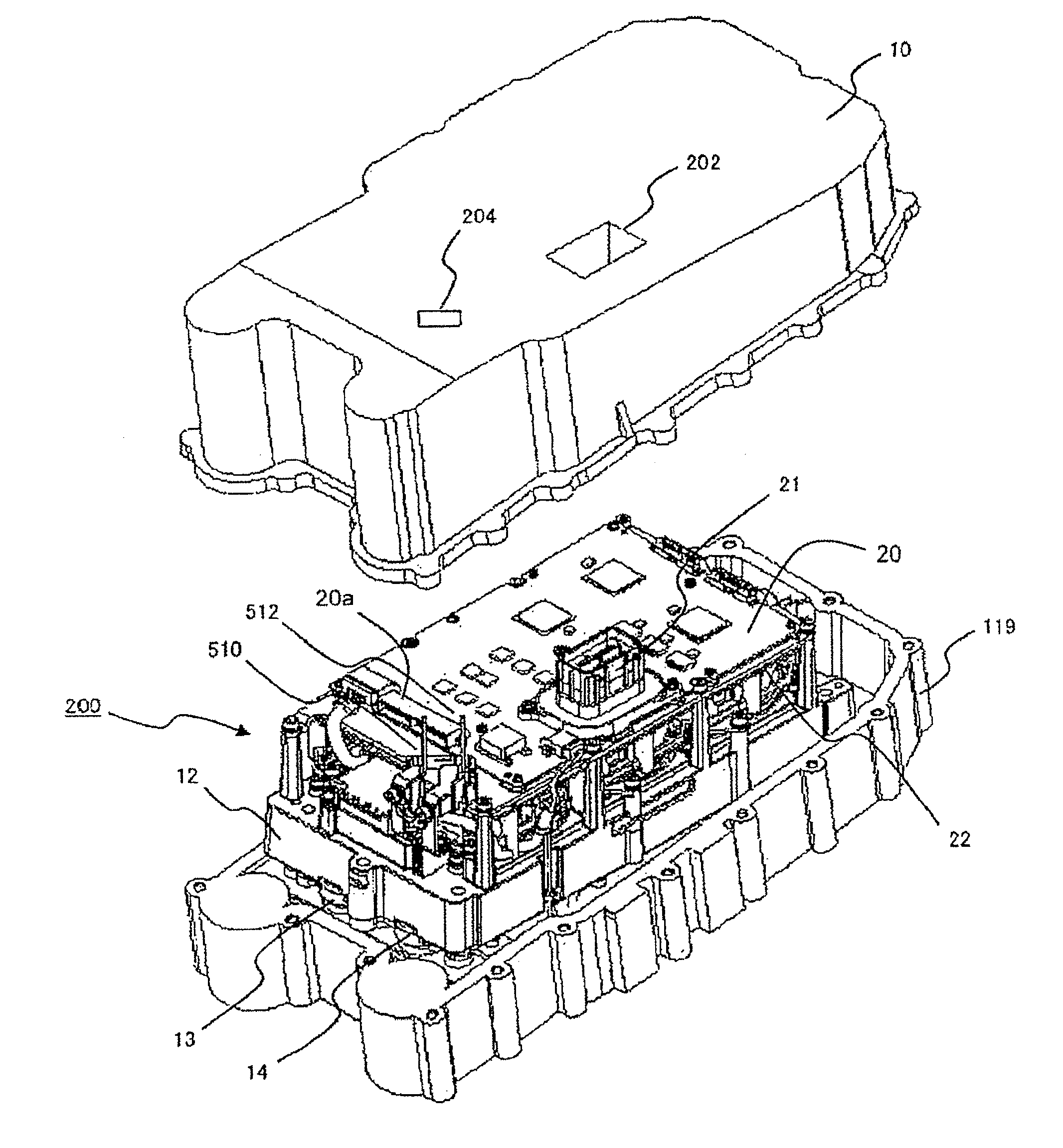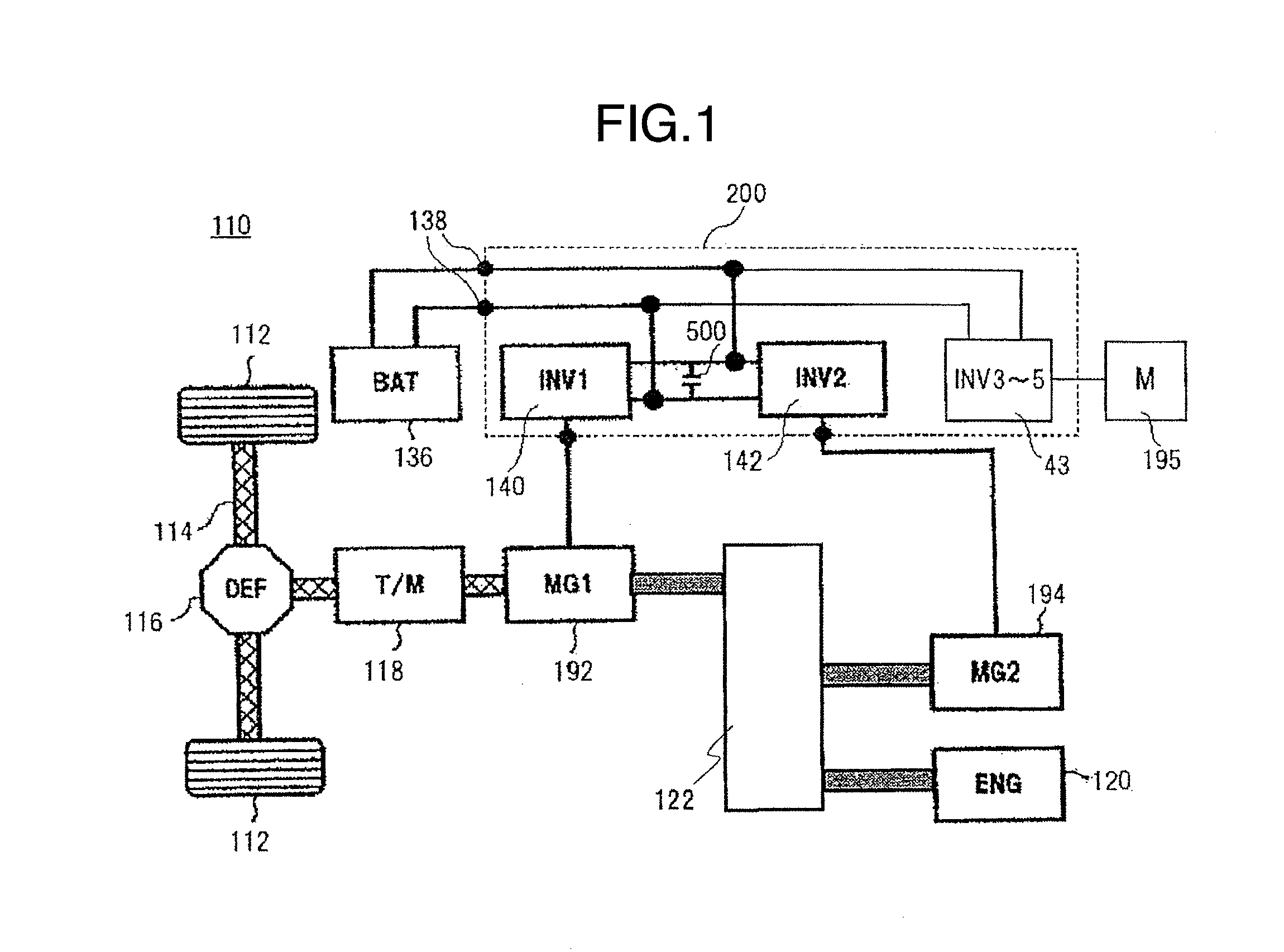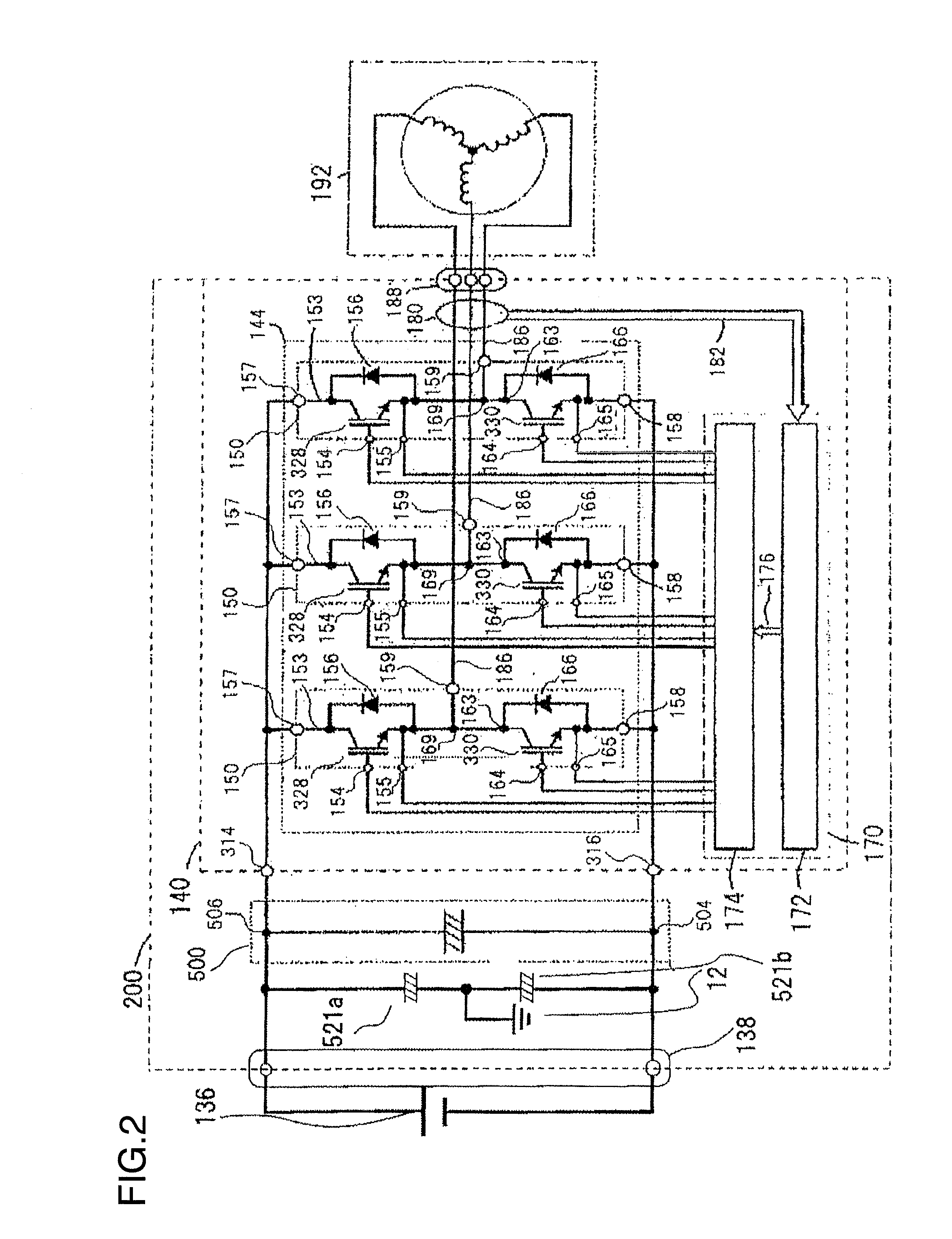Electrical Converter
a technology of electric converters and converters, applied in the direction of electrical device casings/cabinets/drawers, electric devices, structural associations, etc., can solve problems such as electromagnetic noise, and achieve the effect of reducing radiated noise, being inexpensive and small, and being convenient to us
- Summary
- Abstract
- Description
- Claims
- Application Information
AI Technical Summary
Benefits of technology
Problems solved by technology
Method used
Image
Examples
second embodiment
[0152]FIG. 21 is a diagram showing an example of a cross-sectional view of an electrical converter according to the present invention.
[0153]The electrical converter according to the second embodiment of the present invention is characterized in that a general radio wave absorbent 11b made of carbon, ferrite, or the like is used to surround the battery negative electrode-side connection terminal section 510 and the battery positive electrode-side connection terminal section 512. As a result, induced current induced from the battery negative electrode-side connection terminal section 510 and the battery positive electrode-side connection terminal section 512 to the control connector 20a can be reduced, and secondary radiation from the walls 11a can be prevented.
third embodiment
[0154]FIG. 22 is a diagram showing an example of a cross-sectional view of an electrical converter according to the present invention.
[0155]The electrical converter according to the second embodiment of the present invention is characterized in that a dielectric material 11c with a higher dielectric constant than air is inserted between the battery negative electrode-side connection terminal section 510, the battery positive electrode-side connection terminal section 512 and the wall 11a electrically connected to the base plate 11. The battery (direct current) negative electrode-side connection terminal section 510, the battery (direct current) positive electrode-side connection terminal section 512 and the wall 11a electrically connected to the base plate 11 are closely arranged, and by inserting the high-dielectric material 11c to the spaces, the noise current that entered the battery negative electrode-side connection terminal section 510 and the battery positive electrode-side c...
fourth embodiment
[0156]FIG. 23 is a diagram showing an example of a cross-sectional view of an electrical converter according to the present invention.
[0157]The electrical converter according to the second embodiment of the present invention is characterized in that the walls 11a are formed as portions of the case 10.
[0158]When the case 10 is grounded from above the base plate 11, the walls 11a may be formed as portions of the case 10 as shown in FIG. 23. As a result, the inductance of the walls 11a up to the ground is reduced, and since the walls 11a are installed at points where the potential is stable, the noise reduction effect can be increased.
[0159]Since, in the present embodiment, the targets to be cooled by the refrigerant flowing through the channel 19 are mainly the drive power modules 300 and 301, the power modules 300 and 301 are stored in the channel 19 and cooled by direct contact with the refrigerant. Meanwhile, cooling of the auxiliary machine power module 350 is also demanded, altho...
PUM
 Login to View More
Login to View More Abstract
Description
Claims
Application Information
 Login to View More
Login to View More - R&D
- Intellectual Property
- Life Sciences
- Materials
- Tech Scout
- Unparalleled Data Quality
- Higher Quality Content
- 60% Fewer Hallucinations
Browse by: Latest US Patents, China's latest patents, Technical Efficacy Thesaurus, Application Domain, Technology Topic, Popular Technical Reports.
© 2025 PatSnap. All rights reserved.Legal|Privacy policy|Modern Slavery Act Transparency Statement|Sitemap|About US| Contact US: help@patsnap.com



